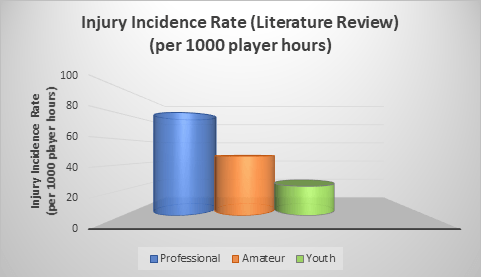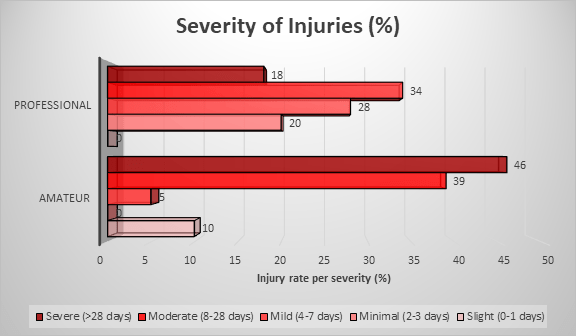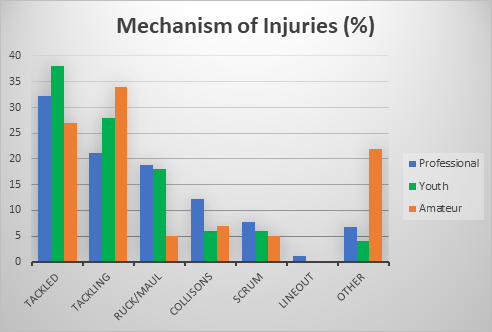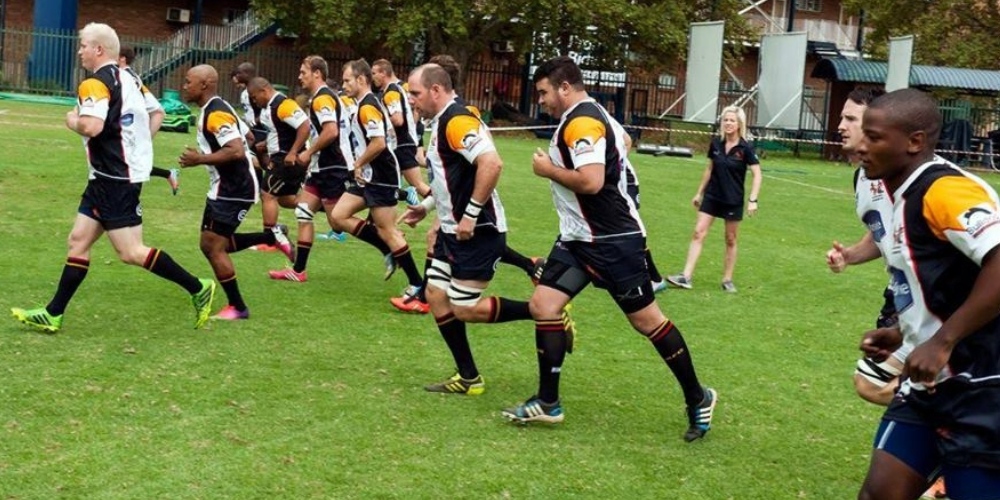Research Title: Injury Incidence Profile of the Amateur Rugby Player
Since the advent of professionalism, the demand for knowledge on the science behind Rugby Union has influenced the investigation of injury incidence and epidemiology, the majority of which is focused on professional and youth level, with limited research exploring the injury incidence profile of the amateur Rugby player. Knowledge of the current injury incidence profile and the use of movement screening analysis in amateur Rugby allows for the identification of risk factors, which guides us in our efforts to reduce the risk of injury, consequently increasing not only the safety of the game, but also the level of performance displayed by each player. Annie recently examined the injury incidence profile of the amateur male Rugby player, compared with the current research across other levels of play.
Methodology
The population examined included a large group of amateur male South African Rugby players and the injury definitions and data collection procedures used were aligned with the recommended methodologies set by the RICG (Rugby Injury Consensus Group) which was established by the International Rugby Board, in order to standardise the reporting of injuries in Rugby Union. All reporting of injuries also followed the guidelines of the RICG with the exception of detailing injury rates per 1000 player hours, which was impossible to determine, given that player hours could not be monitored. Participants were questioned on their position of play and details of any injuries they experienced over their previous season of play so as to obtain current data. As a secondary aim of the study, participants were questioned on participation in any form of movement screen/test, so as to determine if this is being used as a tool for injury screening within the amateur Rugby community.
Findings

Figure 1. The difference in injury incidence rate between levels of competition as per literature review (per 1000 player hours) (Haseler, et al., 2010; Williams, et al., 2013; Viviers, et al., 2018; Yeomans, et al., 2018)
Analysis of the examined amateur population, and comparison to a substantial review of previous research literature, revealed that injury incidence increases with competitive level, age, and exposure to play. However, the severity of injuries is greater at lower levels of play. There is a significantly greater incidence of match injuries compared to training injuries, as well as a greater incidence of new injuries compared to recurrent injuries; with a trivial difference in the incidence of injuries between backs and forwards and no particular trends of significance in injury rates per position.

Figure 2. Rate of injuries per severity at the professional level (literature review) and of the surveyed amateur population (%) (Fuller, et al., 2007; Fuller, et al., 2009; Fuller, et al., 2013; Williams, et al., 2013)
The most commonly injured body region at all levels is the lower limb, followed by the upper limb; with the knee being the most common joint injured, followed by the shoulder, indicating a strong trend in injury sites across the spectrum. At the professional level, the most common types of injury were muscle/tendon, followed by joint (non-bone)/ligament, whereas a reverse observation was made at amateur and youth level, with the most common type of injury being joint (non-bone)/ligament, followed by muscle/tendon.

Figure 3. Mechanism of injuries experienced including details from the literature review and the surveyed amateur population (%) (Viviers, et al., 2018; Whitehouse, et al., 2016; Palmer-Green, et al., 2013; Bleakley, et al., 2011; Haseler, et al., 2010; Schneiders, et al., 2009)
Comparison of the mechanisms of injury shows that the tackle for both the tackler and the ball carrier is the event which results in the largest amount of injuries across all ages and levels of play. The current literature reveals that at both professional and youth level, being tackled results in the most amount of injuries, with tackling being the second most common cause of injury, whereas at an amateur level the tackler presents with more injuries than the tackled player. The final observation of the examined population showed that only 4.9% participated in a movement screen as part of their Rugby preparation.
Summary
This study reveals that although the risk of injury is greater with increasing competitive level, age and exposure to play, the severity of injury experienced at amateur and youth level is greater, which may be explained by a lower level of formal preparation or the lack of access to medical treatment, when compared to what is available at professional level. Aside from the severity of injuries, the examination of all data showed similar trends across all levels. However, with tackling being the most common mechanism of injury at amateur level, this may further support the argument that a more advanced level of preparation, through physical conditioning and technical practice, may decrease the exposure to more serious injuries. Additionally, data from the examined amateur population suggests that movement screening is underutilised as a tool for reducing the risk of injury at amateur level Rugby. Consequently, it could be suggested that a greater focus on preparation, including an emphasis on technique in the contact zone as well as the use of movement screening, could not only reduce the risk of injury but also potentially decrease the severity of injuries experienced in the amateur spectrum of Rugby.
With this in mind, Annie is currently exploring the development of a Rugby specific movement screening protocol based on the skill demands and injury incidence profile of Rugby.



Leave A Comment